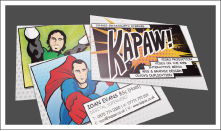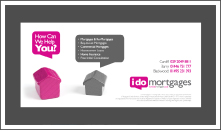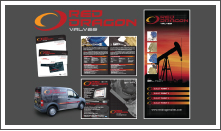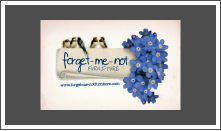Each of the world's great brands: Coca-Cola, McDonalds, Virgin, Sony have an in-built recognition, not only of the identity, literature or packaging but of the values, product expectation, integrity and target audience of the brand.
However, you don't have to be a multinational company to develop a strong brand. While not all will be appropriate to your own business, and you may find some overlap or conflict, hopefully one or two of the following tips and guidelines will help when developing your brand strategy in the future.
1. Be Noticed
 Make an impact - make people remember your brand
Make an impact - make people remember your brandGet noticed. Make people remember your brand, if they remember your name, chances are they will remember your product, service or offer.
Brand proliferation, association or benefit
You can make people remember your name in a number of ways. Brand proliferation - putting your name everywhere, brand association - linking it to a memorable phrase or imagery or offering a positive brand benefit - a USP, a special offer or free gift are just a few ways.
First impressions count
We've all heard it before. Make your first impression count. Make sure your business is being represented how it should be. Don't let yourself down with a tatty business card, dodgy home-made literature or a poorly designed advert. This also applies to your personal appearance and demeanour. Don't forget that for most of us - we are our brands.
Humour is a good ice-breaker and memory hook - but be careful!
Humour can work to get people's attention, as an ice-breaker or memory hook, we all remember a funny advert, or clever 60 seconds - but be careful. Don't overstep the mark, or more importantly misjudge your audience.
2. Be Connected
 How do your customers relate to your brand?
How do your customers relate to your brand?How does your customer relate to you? Do they understand what you're about? Is it immediately apparent from your brand and collateral to your customer what you're about?
Appropriateness of style and content
Are there particular styles, images or colour schemes that are appropriate for your line of business that your audience will respond more positively to?
Make your brand talk directly to the customer
Colour, for example, can have particular cultural and sociological significance. Would you use red for an opticians or a vibrant orange for a solicitor? If you did how would the customer react? Make your brand, however subliminally, talk directly to the customer.
Does your brand have subliminal recognition?
Brand recognition is like muscle memory. People get used to doing things. People often choose what they know over something new. Take McDonalds, Burger King or KFC where customers know exactly what they'll get. It's a safe option. A safe pair of hands. A brand they can trust.
3. Be Clear
 Don't baffle your customer
Don't baffle your customer You may understand your message, but does your customer? Don't baffle your customer, unless it's a purposeful tactic to be mysterious - provoking further interest. Don't overload with too much technical data. Speak in a language the customer understands.
Test and measure
Test and measure the brand and message. Everyone has different opinions, but take a general consensus. The one who decides if your message is clear is the customer not you.
Focus. Who are you targeting and why?
Concentrate on the efficiency and focus of brand who are you targeting with your message? Is your brand speaking to the right people?
Clear design can give room for the message to breathe
Clear design gives room for the message to breathe. Be sparing in your use of text and imagery, making sure that what you want to get across isn't drowned out with excessive text or unrelated imagery. Don't be scared of white space. It can work to draw attention to what you want them to see.
4. Be Sure of Yourself
 Make your benefit clear and obvious
Make your benefit clear and obviousMake your benefit clear and obvious. It's not about you it's about the client. Tell them what they want to hear. Tell them what your business, product or service can do for them.
Don't mix your signals. Know your market don't be all things to all men
Don't mix your signals. A strong brand knows what it is. Know your brand position, know your market and exploit it. Don't be all things to all men. Don't be scared of putting off 20% of your potential audience if it results in the other 80% bringing in new business. Be confident in your approach. Stick to your guns even if a small number don't like what you're doing. You don't need them as customers anyway!
5. Be Consistent
 Maintain consistent message
Maintain consistent messageIt sounds obvious, and I've been guilty of neglecting this in the past, but maintaining a consistent brand message and brand identity promotes the feeling of solidity and security with customers and gives the impression that you know what you're about, making you easier to trust.
Does your collateral match?
A simple place to start. Does your collateral match. Does your website look like it belongs with your business card? Does your literature convey the same message as your vehicle graphics?
Aid to memory
Consistency is also an aid to memory, and as the first secret discussed being remembered is a step in the right direction.
6. Be Different
 Assess your competitors. What are they doing wrong? How do you differ? Why are you better?
Assess your competitors. What are they doing wrong? How do you differ? Why are you better?Many businesses make advertising and brand decisions based on what their competitors are doing. If one company advertise in a certain place or present their message in a certain way, the other company follows. Why assume that they have got it right in the first place. Are they misreading the customer. Like in any aspect of business, take a step back, appraise your competitors and take what they're doing right and leave what they're doing wrong.
Don't be scared to try a different approach
Secondly, how do you differ? Don't be afraid to sell why you are better, and let the customer know why they should choose you.
Use contrast in design layout to emphasise the message
Contrast in design layout can also draw attention to what you want the eye to see. The space you don't use is almost as important as the space you do!
7. Be Direct
 Give your customer an invitation for interaction
Give your customer an invitation for interactionLeave your audience with an invitation for interaction. This doesn't necessarily mean a 'call now for a free gift' type of thing, but more a 'buy this and it'll make your life better' kind of thing. Sell your benefit as a reason to get in touch, or at least to investigate further, and find out more.
Make it easy for them and make the call to action obvious within your design
Make it easy for the audience to interact. Make sure your phone number, web address, email are all on there. If you require more information, make it obvious what info it is that you want.